Menus
- Serious changes
- New cylinder head of the KTM 690 Duke
- The closer the slalom, the better
- What’s new?
- 690 Duke R vs. 690 Duke
- The difference between R and Basis is enormous
- Technical data KTM 690 Duke
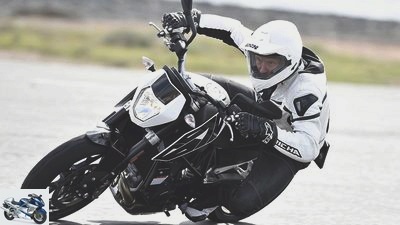
KTM
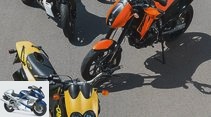
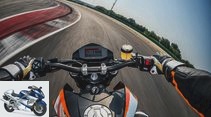
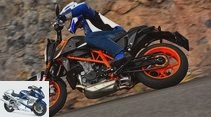
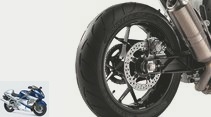
19th photos

KTM
1/19
There is one thing you have to give to the KTM model planners: their instinct for filling niches with precisely fitting models. Good example: the Duke.
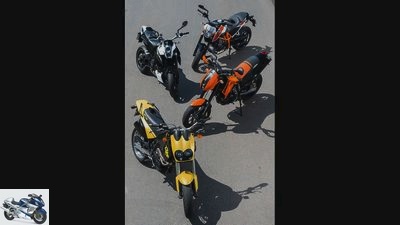
KTM
2/19
Finally, a small family portrait: The first four generations of the Duke have gathered for a rendezvous.
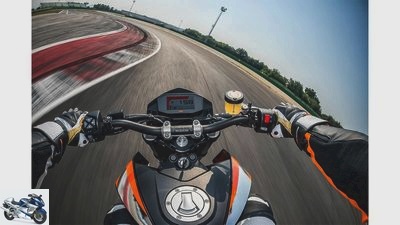
KTM
3/19
The seating position also makes it clear: The noble Duke also likes to visit the racetrack.
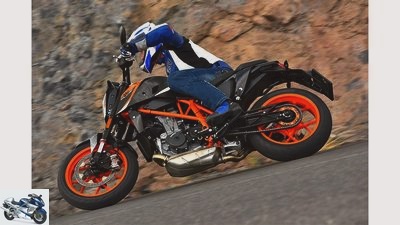
KTM
4/19
The look of the orange frame and wheels distinguishes the Duke R from the basic version.
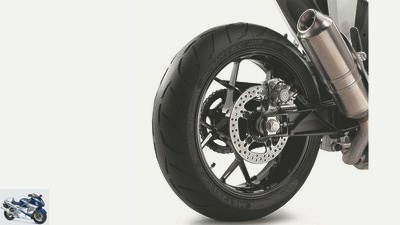
KTM
5/19
… Exhaust system. The standard exhaust that is installed on the Duke R sounds very powerful despite Euro 4 conformity …
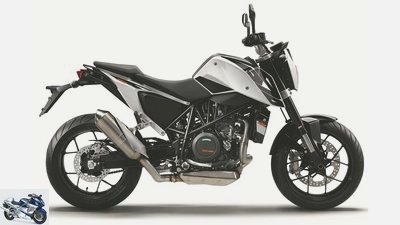
KTM
6/19
It differs from the R variant in that it has a higher handlebar and a different footrest position, and there is another major difference …
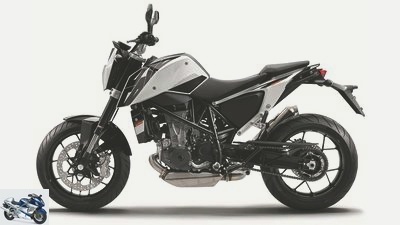
KTM
7/19
Shy appearance: The Duke’s profound technical revision can hardly be seen.
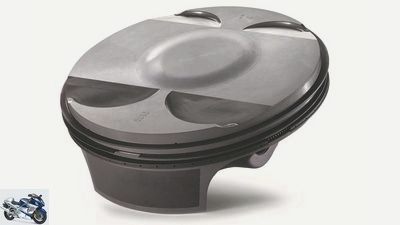
KTM
8/19
The butt head of the Duke.
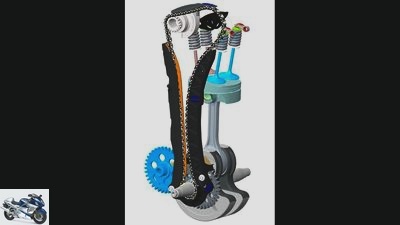
KTM
9/19
The camshaft itself is driven by a chain.
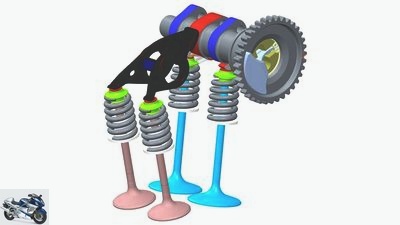
KTM
10/19
… the inlet valves via rocker arms directly and the exhaust valves via a fork rocker arm.
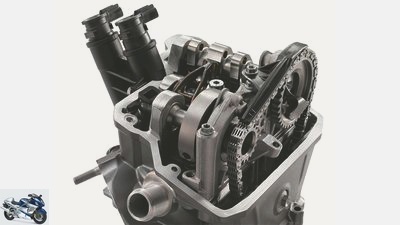
KTM
11/19
… characterize the new inner values of the single cylinder. For this it was necessary to change the valve train. The camshaft operates …
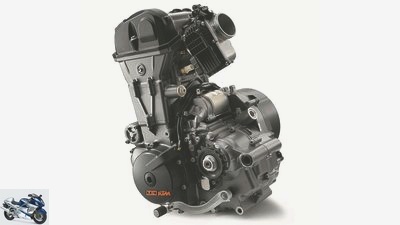
KTM
12/19
Most of the changes compared to the previous model concern the engine. 4.5 mm shorter stroke (bore / stroke 105 x 80 mm instead of 102 x 84.5 mm), the peak power increased from 70 to 73 hp and a second balance shaft …
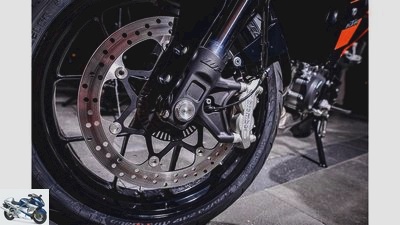
KTM
13/19
Not so good: high hand strength, muddy pressure point – you are used to better stoppers from KTM. And finds it in the R version of the Duke.
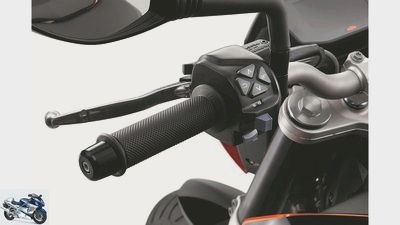
KTM
14/19
Also good: The buttons for menu navigation are illuminated in the dark.
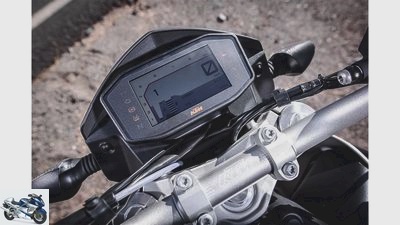
KTM
15/19
Clip and clear: the TFT display (with day and night mode) is easy to read in all lighting conditions.
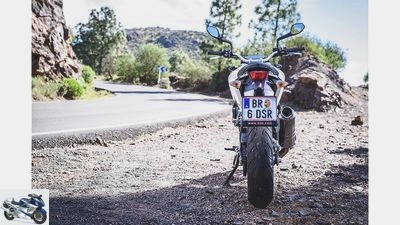
KTM
16/19
… and the narrower-cut driver’s seat hint at the work on the Duke 5 – as the fun mobile operates after the fifth revision – shyly.
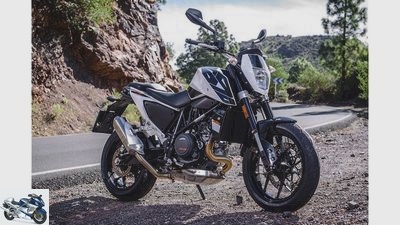
KTM
17/19
And now? If it stands there, the new 690 Duke – and looks just like the old one. Or almost. Only the filigree cast wheels, the TFT display, the control buttons for the on-board computer …
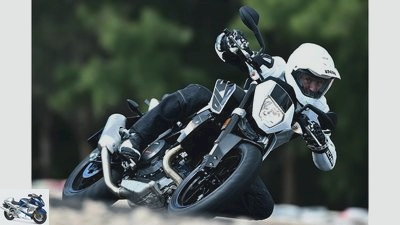
KTM
18/19
For 22 years, the model planners have been working on the unusual mixture of fun, supermoto and naked bikes and have given the fun mobile a modified, contemporary look with every model change.
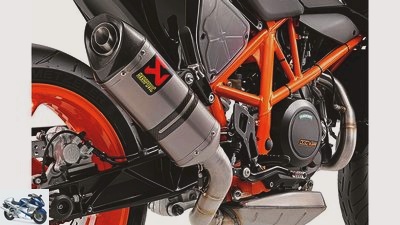
KTM
19/19
… Akrapovic silencer should, among other things, mobilize two more horses.
KTM 690 Duke and KTM 690 Duke R in the driving report
Serious changes
With an additional balancer shaft in the cylinder head and a shorter stroke, KTM implements the fifth model change of the KTM 690 Duke. The effects on the character of the eccentric fun bike are more serious than expected.
E.You have to give the KTM model planners their sense of filling niches with precisely fitting models. Good example: the Duke. The model planners have been working on the unusual mixture of fun, supermoto and naked bikes for 22 years, inflating the single cylinder from 620 to 690 cm³ displacement, upgrading it from initially 50 to 70 hp and adding to the fun mobile every model change a modified, contemporary look.
Buy complete article
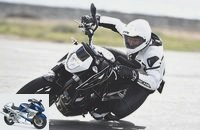
KTM 690 Duke and KTM 690 Duke R in the driving report
Serious changes
690 Duke – and looks just like the old one. Or almost. Only the filigree cast wheels, the TFT display, the control buttons for the on-board computer and the narrower-cut driver’s seat timidly point to the work on the KTM 690 Duke 5 – as the fun mobile is called after the fifth revision.
The KTM 690 Duke would have every reason to be proud. Because in order to improve the smoothness, the large Pott got a 4.5 millimeter shorter stroke (with three millimeters higher bore and only marginally increased displacement to 693 cm³) and a second balance shaft. The latter task in particular was not easy to solve. Because the space in the compact motor housing is exhausted. Which is why the vibration-damping newcomer found shelter in the cylinder head. There, the camshaft moved from the center over the intake valves, now actuating them directly via rocker arms and the exhaust valves via a fork rocker arm. This creates space for the balance shaft driven by the timing chain (see photo). The integration of the new roommate succeeded in such a space-saving way that the ensemble fits under the cylinder head cover that has been taken over from the previous model. By the way: Honda uses this compact technology – albeit without the balancer shaft – under the name Unicam in the VFR 1200 F, the motocrossers and now also in the new Africa Twin.
New cylinder head of the KTM 690 Duke
KTM
A look into the new cylinder head of the KTM 690 Duke.
From the very first few meters with the new KTM 690 Duke, it becomes clear that a new era has dawned in the Duchy. While the single hacked the chain so far under 3000 tours, an imaginary hand is now smoothing out the plucking, turning the big pot at a slow pace as cultivated as never before. Not that we’re wrong. Neither the double ignition and electronic engine control (ride-by-wire) introduced in the 2012 model, nor the now reduced stroke and the balance shaft can eliminate the fundamentally irregular run of such a mighty stew. But it no longer pushes itself into the foreground in the emotional world of the Duke driver, but is overlaid by the appearance that the newly configured single above the 3000 mark is overlaid.
As if the stew of the KTM 690 Duke had thrown kilos of flywheel mass from it during the revision, he starts. It responds spontaneously to the slightest turn of the throttle, clicks so briskly and mechanically freely through the rev range, as if the engineers had tipped a can of Teflon into the engine housing. You don’t remember a second of the time when the vibrations reminded you of upshifting even after 6000 tours. The new, engineered speed-oriented design carelessly ignores this mark – also due to the intake cross-section enlarged from 46 to 50 millimeters – and even encourages it to turn. If you want, you can cheer the now comparatively moderately tingling stew up to the rev limit raised from 8400 to 9000 revs, and enjoy the additional punch (73 hp instead of 70 hp). But he doesn’t have to. The full pressure, the lively liveliness, the improved manners, with all this the propellant now shines permanently and tops the whole thing with the usable speed range almost twice as wide in practice. respect.
All the more so because the Austrians also managed to underlay this formidable performance with a rich, not too loud soundscape despite Euro 4 homologation. The earlier tinny rattle from the stainless steel silencer of the KTM 690 Duke is definitely a thing of the past.
The closer the slalom, the better
In this respect, it is not easy for the euphoric driver of the new KTM 690 Duke to redirect the senses to the mundane life on country roads. Because he will also be enthusiastic about the new TFT display. Smoothly polished tablet surface, day and night mode, easy to read in all lighting conditions and can still be operated from the handlebars – great. Upscale mouse cinema is only available for a surcharge: the Track Pack, which activates two additional driving modes (Rain, Sport), traction control and engine drag torque control (MSR) costs 299 euros. While the idle speed increase, at least when coasting, is responsible for the good manners of the engine, the driving modes of the new KTM 690 Duke rather satisfy the play instinct. You quickly change from the very cautious start in the Rain setup to the Street or Sport speed level, which in turn differ only slightly from each other. For traction control: practical, coordinated intervention, smooth control, great. The ABS too. Even on sloping and bumpy country roads, the rear remains safely on the ground with the courageous forced braking. If you want – and can – you can even deactivate the rear-wheel ABS for a species-appropriate appearance and brake across the hairpin bends in Supermoto style.
Keyword supermoto. KTM states 149 kilograms dry, while MOTORRAD weighed 164 kilograms with a full tank of last year’s model, which was roughly the same weight. Any questions? Brake, bend and straighten up again. Hardly thought, already done. The closer the slalom, the more the new KTM 690 Duke throws the lightness of being typical of a single into the scales – only to finally reach its limits when it comes to high-speed cornering. While the monoshock, which can only be adjusted in the spring preload, is still acceptable, the fork plunges far too deep during sporty braking, brings unrest to the front and regularly haggles the line. Readjustment is not possible on the non-adjustable fork with on-board tools. In any case, in a direct comparison with the KTM 690 Duke R, which is 1900 euros more expensive (see last page), the suspension elements are worlds apart. Like the front brake. Comparatively muddy pressure point and quite a lot of hand strength – once again your eyes will enviously wander to the R version equipped with monoblock stoppers.
Subtle sales promotion or not, the Duke pilot certainly doesn’t have to let that spoil his mood. Because just with the engine, which has been so brilliantly developed in all aspects, the new KTM 690 Duke has made one of the greatest development steps in its history. The single-cylinder fan base should make room in their niche. There will probably be new single fans soon.
What’s new?
KTM
Among other things, the TFT display with day and night mode is new, but most of the changes to the KTM 690 Duke affect the engine.
engine
● 4.5 mm shorter stroke (bore / stroke 105 x 80 mm instead of 102 x 84.5 mm)
● Peak power increased from 70 to 73 hp
● Second balance shaft
● Valve train changed (the camshaft actuates the intake valves directly via rocker arms and the exhaust valves via a fork rocker arm)
● Resonance chamber in the intake tract for a more homogeneous gas flow
● Intake cross-section enlarged from 46 to 50 mm
● Engine speed limit increased from 8400 rpm to 9000 rpm
● Secondary air system
landing gear
● Fork offset reduced from 32 to 28 mm
● Trail increased from 115 to 122 mm
miscellaneous
● TFT display
● Left illuminated switch unit
● Narrow seat
● Three driving modes, engine drag torque control and traction control (only as special equipment)
● Price: 8395 euros (previously: 7895 euros)
690 Duke R vs. 690 Duke
KTM
Show your colors: the frame and wheels in orange visually distinguish the KTM 690 Duke R from the basic version.
KTM
Sound of Singles: The Akrapovic silencer on the KTM 690 Duke R should bring 2 hp more.
The R version of the 690 Duke would pass a blind tasting right away. With flatter handlebars and 60 mm to the rear and 45 mm to the top, the seat test already shows where the journey with the KTM 690 Duke R is going: on the racing track or at least on the home track to the more stringent corner. Fittingly: the fully adjustable spring elements from WP Suspension with 15 mm longer spring travel, the power increased from 73 to 75 hp thanks to the Akrapovic silencer, radial brake pump and monoblock brake caliper and of course the full electronics package with lean angle-dependent traction control, cornering ABS, Engine drag torque control and three driving modes.
The difference between R and Basis is enormous
And what’s the point? Let’s make it short. The difference between the KTM 690 Duke and the KTM 690 Duke R is enormous. The most striking thing about it is the suspension. The fork in particular is brilliant. It keeps the front noticeably better under control and improves steering precision enormously. Overall, the R version looks better balanced thanks to the higher quality spring elements. The front brake system is also far superior, impresses with its defined pressure point and reduced, if not extremely low, manual force. The seating position is still comfortable despite the sporty touch and with a moderate knee angle is also good for the Sunday tour. A comparison test will soon clarify whether the complex electronics make the KTM 690 Duke R really more efficient or safer in extreme situations.
Conclusion: The KTM 690 Duke R is superior to the standard Duke in every respect. But also in the price. At 10,295 euros plus additional costs, the noble single is an impressive 1900 euros above the tariff of the basic version of the KTM 690 Duke. Still, if you say Duke, you should also say R..
Technical data KTM 690 Duke
KTM
Shy appearance: The KTM 690 Duke is hard to see because of the profound technical revision.
Related articles
-
KTM 690 Duke – KTM 690 Duke R in the PS driving report
KTM 15 pictures KTM 1/15 The single gets off to a refreshing start, as if the engineers had carved kilos of flywheel mass from all the waves. StudioMAC 2/15 …
-
Driving report KTM 950 Supermoto R
Peuker driving report KTM 950 Supermoto R R-lebnis Smooth running engine, first-class chassis, casual seating position ?? the 950 KTM proves that …
-
KTM 690 Duke (model year 2016) in the driving report
Heiko Mandl 14 pictures KTM 1/14 We were able to exclusively take the 2016 KTM 690 Duke for a little jaunt. KTM 2/14 The seat height of the new KTM 690 …
-
Driving report KTM 990 Super Duke
Jahn Fahrbericht KTM 990 Super Duke Facelift With its head held high, the Super Duke is slipping into its second term of office. A newly contoured nose that …
-
Ducati 899 Panigale in the driving report
Cervetti 17 pictures Ducati 1/17 Even with the front wheel still braked and at high speed, the Ducati 899 Panigale hits the path precisely into the Tamburello ….
-
Jahn Fahrbericht CR S Vun Lots of coal The small Milanese noble forge CR S created a dream of a single-cylinder sports bike. The framework of the Vun …
-
Driving report Superbike-Kawasaki Tom Sykes
Kawasaki 20 pictures Kawasaki 1/20 Kawasaki 2/20 Kawasaki 3/20 Kawasaki 4/20 Kawasaki 5/20 Kawasaki 6/20 Kawasaki 7/20 Kawasaki 8/20 Kawasaki 9/20 pic …
-
Driving report TM Racing 400 F
Driving report TM Racing 400 F Who sows the wind … … will reap the storm. The off-road scene sets the sails in terms of four-stroke technology. Surprisingly far ahead in …
-
Driving report Triumph Tiger 800 XCx and XRx
Triumph 31 pictures Triumph 1/31 Triumph 2/31 Triumph 3/31 Triumph 4/31 Triumph 5/31 Triumph 6/31 Triumph 7/31 Triumph 8/31 Triumph 9/31 Triumph 10/31 …
-
Suzuki GSX-R 125 and Suzuki GSX-S 125 in the driving report
Suzuki 17 pictures Suzuki 1/17 Suzuki GSX-R 125.Suzuki 2/17 Suzuki GSX-R 125.Suzuki 3/17 Suzuki GSX-R 125.Suzuki 4/17 Suzuki GSX-R 125.Suzuki 5/17 …